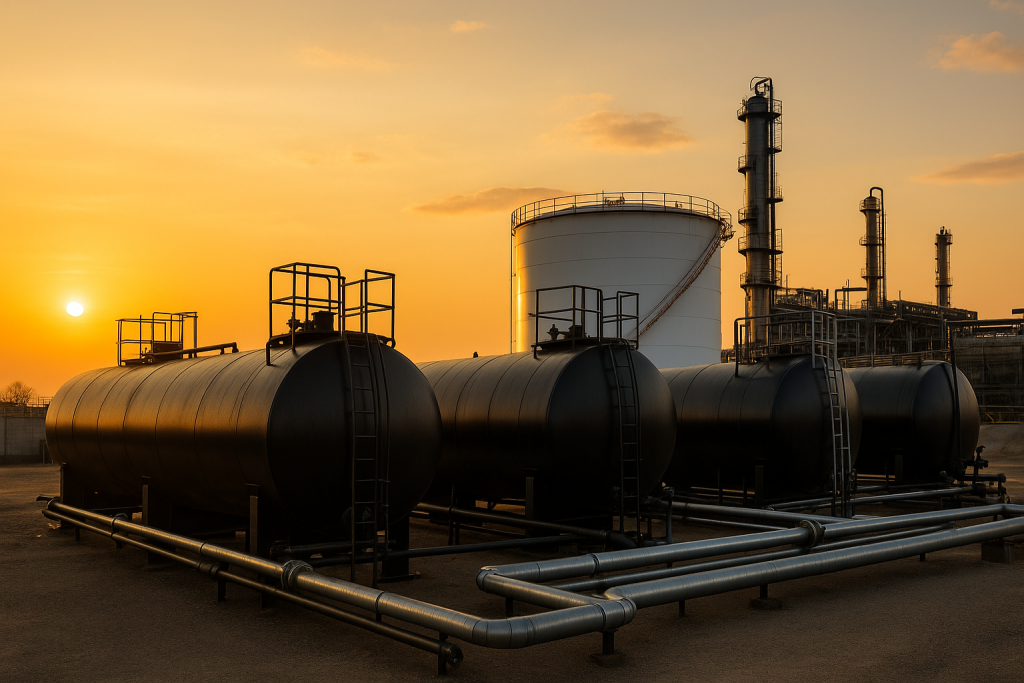Bitumen Price Trends 2025 in Malaysia: Market Forecast, Key Drivers, and Future Outlook

Introduction
Bitumen plays a vital role in Malaysia’s infrastructure landscape. As the country expands its road networks, ports, and industrial zones, understanding bitumen price trends in 2025 becomes crucial for contractors, investors, and policy makers. The Malaysian market has been dynamic—affected by global crude prices, shipping costs, and regional competition.
What is Bitumen and Why It Matters
Bitumen is a black, sticky substance derived from crude oil, primarily used for road surfacing and waterproofing. In Malaysia, it forms the backbone of the country’s infrastructure, from highways like the Pan-Borneo project to airport runways and industrial zones.
Without bitumen, modern roads would crumble—making it one of the most essential construction materials in the nation.
Overview of Malaysia’s Bitumen Market in 2024
In 2024, Malaysia experienced stable yet cautious bitumen trading activity. The country imported a significant portion from Singapore, South Korea, and the UAE. Local suppliers like Petronas, Shell Malaysia, and regional partners such as Aljabal Holding and Persa Exim Trading maintained a steady flow to support domestic needs.
Transition into 2025: A Changing Market
As Malaysia entered 2025, the bitumen market started witnessing moderate price hikes. Economic recovery after COVID-19 and revived government infrastructure budgets pushed demand upward. However, shipping bottlenecks and rising fuel costs created pricing pressure on importers.
Global Influences on Malaysian Bitumen Prices
The global crude oil market remains the strongest determinant of bitumen prices. In 2025, the average Brent Crude price hovered between $85–$95 per barrel, influencing refinery output costs. Additionally, international freight rates and geopolitical tensions in the Middle East slightly disrupted supply chains.
Domestic Factors Affecting Bitumen Prices
Locally, refinery production and import tariffs directly affect bitumen cost. Malaysia’s dependence on imported bitumen grades means even slight fluctuations in exchange rates (MYR/USD) can have noticeable effects. Government investments under Budget 2025 in infrastructure also contributed to increased domestic consumption.
Price Trends Analysis: Early 2025
As of Q1 2025, the average price of bitumen 60/70 in Malaysia ranged from RM 2,600 to RM 2,900 per metric ton, depending on port location and supplier.
In comparison, the average in 2024 was around RM 2,400/MT, marking an 8–10% increase. Higher logistics and crude oil costs were the main drivers.
Forecast for Mid and Late 2025
Experts project a continued upward trajectory, with potential stabilization in Q3–Q4 2025 as crude oil supply balances improve. By the end of 2025, bitumen prices in Malaysia could average between RM 2,850 and RM 3,100 per metric ton, assuming no major geopolitical disruptions.
Impact of Global Oil Prices
Bitumen pricing closely mirrors crude oil movement. When Brent Crude crosses the $90 threshold, refineries pass on the cost to asphalt producers. Additionally, OPEC+ production cuts and seasonal refinery maintenance schedules can tighten supply and push prices higher.
Infrastructure and Construction Demand
Malaysia’s construction sector is on an upward trend. Large-scale developments such as:
- Pan Borneo Highway Project
- East Coast Rail Link (ECRL)
- Johor Bahru–Singapore Rapid Transit System (RTS)
…are key demand drivers for bitumen. With the government emphasizing connectivity and industrial expansion, 2025 is set to be a high-demand year.
Import and Export Dynamics
Malaysia primarily imports bitumen from:
- Singapore
- South Korea
- United Arab Emirates (UAE)
- India
Companies like Aljabal Holding, Persa Exim Trading, ExxonMobil, and TotalEnergies play major roles in ensuring consistent supply. While Malaysia is more of an importer than an exporter, regional re-export opportunities exist via Malaysian ports to Indonesia and Thailand.
Sustainability and Innovation in Bitumen
Sustainability is reshaping the bitumen sector. Many suppliers are introducing polymer-modified bitumen (PMB) and recycled asphalt technologies, which reduce carbon emissions and enhance durability. These innovations may increase short-term costs but ensure long-term savings.
Price Outlook by Grade
Here’s an approximate grade-wise trend projection for 2025:
| Bitumen Grade | Q1 2025 Price (RM/MT) | Expected Q4 2025 Price (RM/MT) |
|---|---|---|
| 60/70 | 2,700 | 3,000 |
| 80/100 | 2,650 | 2,950 |
| VG-30 | 2,800 | 3,100 |
Premium polymer-modified grades are expected to rise slightly faster due to growing demand in high-temperature regions and large-scale projects.
Challenges in the Malaysian Bitumen Industry
Despite positive forecasts, the industry faces several challenges:
- Supply chain bottlenecks
- Global shipping container shortages
- Unpredictable oil market volatility
- Tight environmental and emission regulations
These factors could cause temporary price spikes or delivery delays in 2025.
Conclusion
The bitumen price trend in Malaysia for 2025 suggests a cautiously optimistic outlook. Prices are likely to remain firm with moderate increases throughout the year, driven by steady infrastructure demand and global oil market dynamics. For construction companies and suppliers, staying informed and securing contracts early may provide a strategic advantage.
FAQs
1. What is the current price of bitumen in Malaysia (2025)?
As of Q1 2025, prices range between RM 2,600 and RM 2,900 per metric ton, depending on the grade and supplier.
2. Why are bitumen prices increasing in Malaysia?
Rising crude oil prices, logistics costs, and higher domestic demand are key reasons behind the increase.
3. Which bitumen grade is most used in Malaysia?
Bitumen 60/70 is the most commonly used grade for road construction and infrastructure projects.
4. Who are the top bitumen suppliers in Malaysia?
Major suppliers include Aljabal Holding, Petronas, Shell Malaysia, and several international traders from Singapore and the UAE.
5. What is the outlook for bitumen prices in 2026?
If oil markets stabilize and supply chain pressures ease, prices may normalize by mid-2026, with smaller fluctuations compared to 2025.
